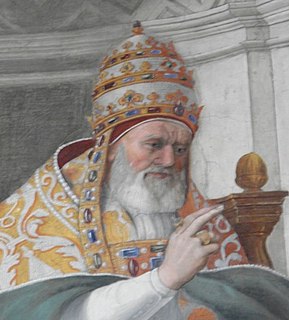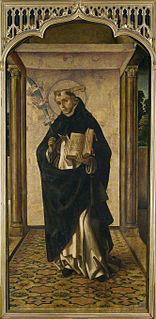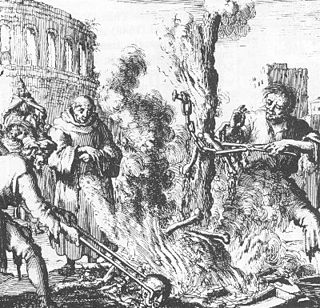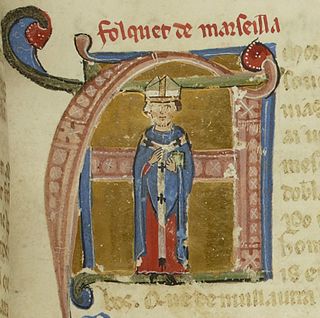
Catharism was a Christian dualist or Gnostic revival movement that thrived in some areas of Southern Europe, particularly what is now northern Italy and southern France, between the 12th and 14th centuries. The followers were known as Cathars and are now mainly remembered for a prolonged period of persecution by the Catholic Church, which did not recognise their belief as being Christian. Catharism appeared in Europe in the Languedoc region of France in the 11th century and this is when the name first appears. The adherents were sometimes known as Albigensians, after the city Albi in southern France where the movement first took hold. The belief system may have originated in Persia or the Byzantine Empire. Catharism was initially taught by ascetic leaders who set few guidelines, and, thus, some Catharist practices and beliefs varied by region and over time. The Catholic Church denounced its practices including the Consolamentum ritual, by which Cathar individuals were baptized and raised to the status of "perfect".

The Medieval Inquisition was a series of Inquisitions from around 1184, including the Episcopal Inquisition (1184–1230s) and later the Papal Inquisition (1230s). The Medieval Inquisition was established in response to movements considered apostate or heretical to Christianity, in particular Catharism and Waldensians in Southern France and Northern Italy. These were the first inquisition movements of many that would follow.

The Albigensian Crusade or the Cathar Crusade was a 20-year military campaign initiated by Pope Innocent III to eliminate Catharism in Languedoc, in southern France. The Crusade was prosecuted primarily by the French crown and promptly took on a political flavour, resulting in not only a significant reduction in the number of practising Cathars, but also a realignment of the County of Toulouse in Languedoc, bringing it into the sphere of the French crown and diminishing the distinct regional culture and high level of influence of the Counts of Barcelona.

Bogomilism was a Christian neo-Gnostic or dualist sect founded in the First Bulgarian Empire by the priest Bogomil during the reign of Tsar Peter I in the 10th century. It most probably arose in what is today the region of Macedonia as a response to the social stratification that occurred with the introduction of feudalism and as a form of political movement and opposition to the Bulgarian state and the church.

Saint Peter of Verona O.P., also known as Saint Peter Martyr, was a 13th-century Italian Catholic priest. He was a Dominican friar and a celebrated preacher. He served as Inquisitor in Lombardy, was killed by an assassin, and was canonized as a Catholic saint 11 months after his death, making this the fastest canonization in history.

The Bosnian Church was a Christian church in medieval Bosnia that was independent of and considered heretical by both the Roman Catholic and the Eastern Orthodox hierarchies.

The Château de Montségur is a former fortress near Montségur, a commune in the Ariège department in southern France. Its ruins are the site of a razed stronghold of the Cathars. The present fortress on the site, though described as one of the "Cathar castles," is actually of a later period. It has been listed as a monument historique by the French Ministry of Culture since 1862.

Arnoldists were a pre-Protestant Christian movement in the 12th century, named after Arnold of Brescia who criticized the great wealth and possessions of the Roman Catholic Church, and preached against baptism and the Eucharist. His disciples were also called "Publicans" or "Poplecans", a name probably deriving from Paulicians. The Arnoldists were condemned as heretics by Pope Lucius III in the Ad abolendam during the Synod of Verona in 1184.
Nicetas, known only from Latin sources who call him papa Nicetas, is said to have been the Bogomil bishop of Constantinople. In the 1160s he went to Lombardy. His purpose was apparently to reinforce the dualist beliefs of the Cathars of these regions, and, in particular, to throw doubt on the validity of their spiritual lineage or ordo, the sequence of consolamenta by which they were linked to the Apostles.

Verfeil is a commune in the Haute-Garonne department in southwestern France.

The pataria was an eleventh-century religious movement in the Archdiocese of Milan in northern Italy, aimed at reforming the clergy and ecclesiastic government in the province and supportive of Papal sanctions against simony and clerical marriage. Those involved in the movement were called patarini, a word chosen by their opponents, which means "ragpickers", from Milanese patee "rags". In general the patarini were tradesmen motivated by personal piety. The conflict between the patarini and their supporters and the partisans of the simoniacal archbishops eventually led to civil war by the mid-1070s, the Great Saxon revolt. It received its most dependable contemporary chronicler in Arnulf of Milan.
In Gnosticism and other Western mystical traditions, the divine spark is the portion of God that resides within each human being.

Cathar castles is a modern term used by the tourism industry to denote a number of medieval castles of the Languedoc region. Some had a Cathar connection, in that they offered refuge to dispossessed Cathars in the thirteenth century. Many of these sites were replaced by new castles built by the victorious French Crusaders and the term is also applied to these fortifications despite having no connection with Cathars. The fate of many Cathar castles, at least for the early part of the Crusade, is outlined in the contemporary Occitan "Chanson de la Croisade", translated into English as the "Song of the Cathar Wars".
Peter of Vaux de Cernay was a Cistercian monk of Vaux-de-Cernay Abbey, in what is now Yvelines, northern France, and a chronicler of the Albigensian Crusade. His Historia Albigensis is one of the primary sources for the events of that crusade.

Heresy is any belief or theory that is strongly at variance with established beliefs or customs, in particular the accepted beliefs of a church or religious organization. A heretic is a proponent of such claims or beliefs. Heresy is distinct from both apostasy, which is the explicit renunciation of one's religion, principles or cause, and blasphemy, which is an impious utterance or action concerning God or sacred things.
The Synod of Verona was held November 1184 under the auspices of Pope Lucius III and the Holy Roman Emperor Frederick I.

The Massacre at Béziers refers to the slaughter of the inhabitants during the sack of Béziers, an event that took place on 22 July 1209, and was the first major military action of the Albigensian Crusade.
Peire Autier was a Cathar Good Man (leader) in the Languedoc region of southern France. Originally a notary from Ax-les-Thermes, he travelled to Lombardy and Piedmont with his brother, Jacques, in the 1290s and converted to Catharism. During the winter of 1299–1300, he returned to Languedoc to revive the Cathar Church. He was arrested by the inquisitor Geoffroy d'Ablis in August 1309 and burned at the stake for heresy on April 10, 1310.
"Caedite eos. Novit enim Dominus qui sunt eius." was allegedly spoken by Papal legate and Cistercian abbot Arnaud Amalric prior to the massacre at Béziers, the first major military action of the Albigensian Crusade. A direct translation of the Latin phrase would be "Kill them. For the Lord knows those that are His own." Less formal English translations have given rise to variants such as "Kill them all; let God sort them out." Other sources give the quotation as "Neca eos omnes. Deus suos agnoscet."

The Council of Toulouse (1229) was a Council of the Roman Catholic Church called by Folquet de Marselha the Bishop of Toulouse in 1229 AD. The council forbade laity to read vernacular translations of the Bible.














